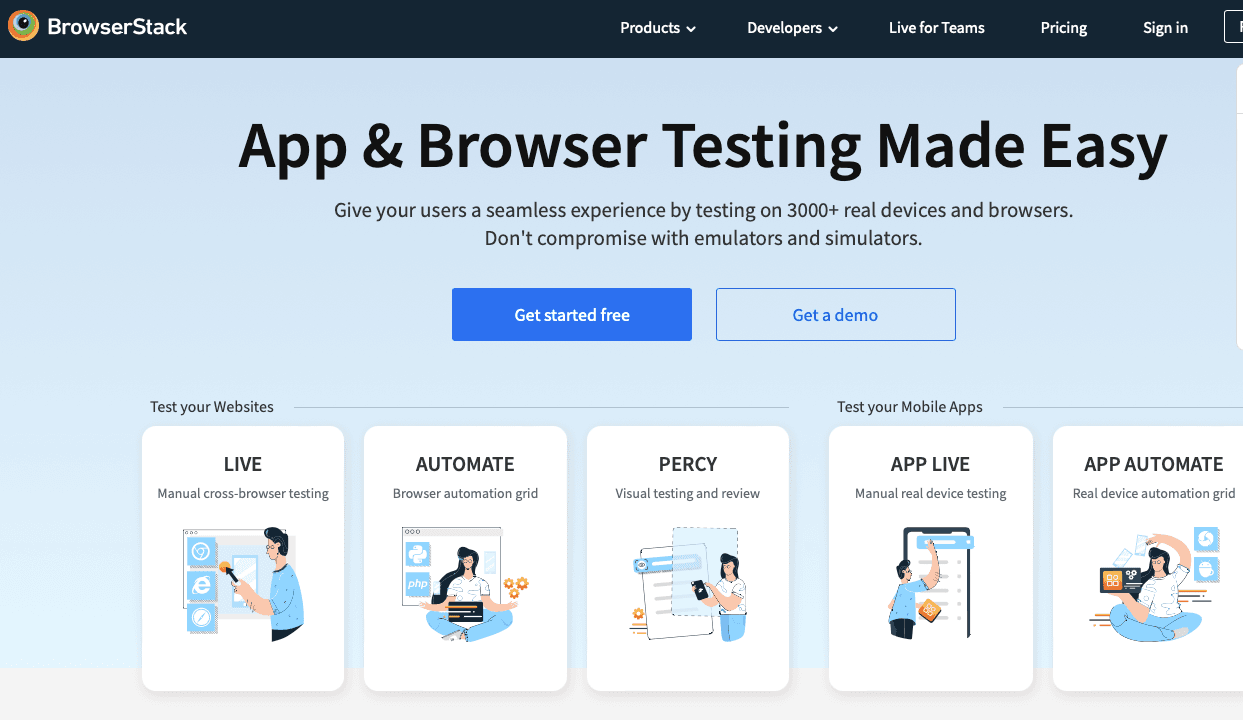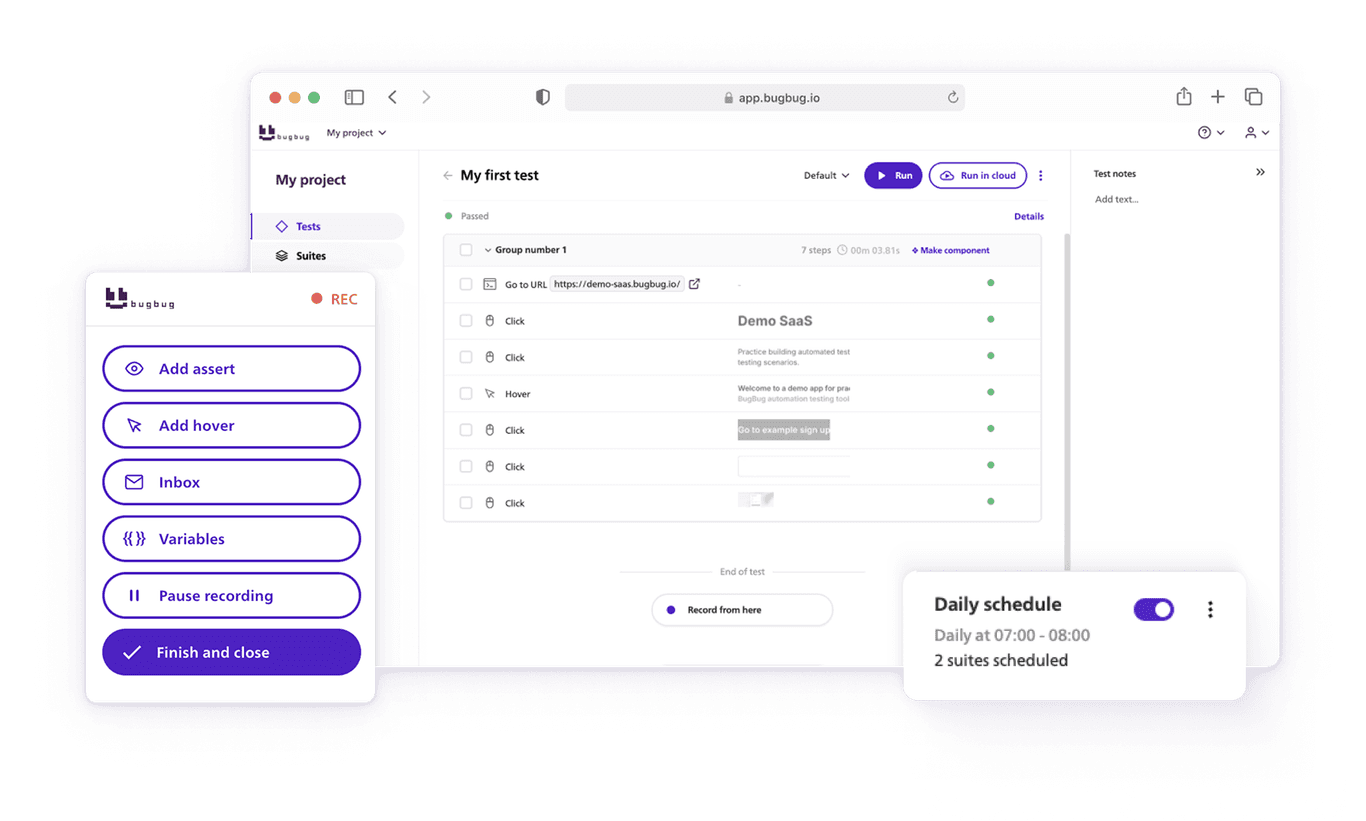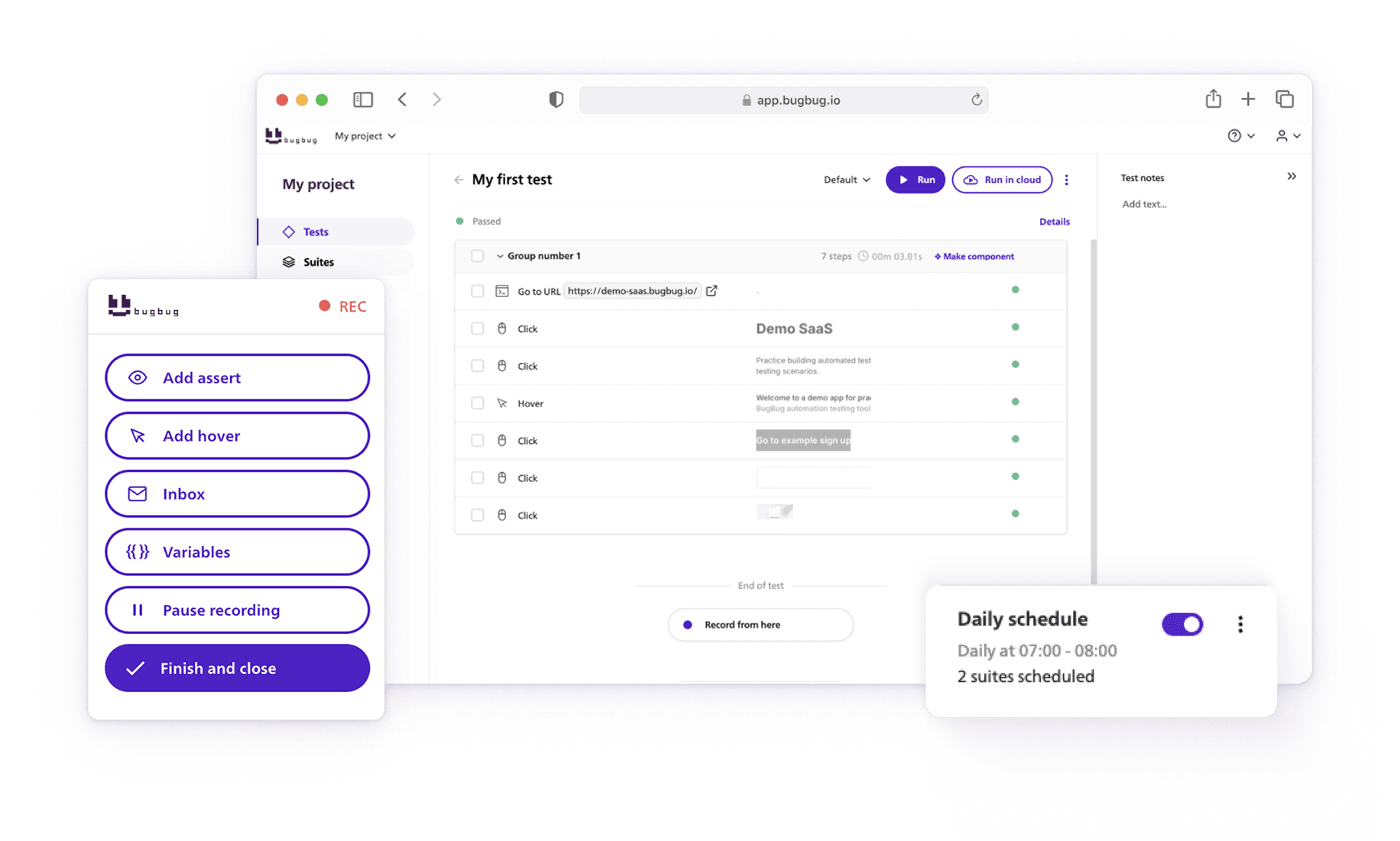If you’re managing QA for web and mobile applications, you know how critical it is to run reliable test cycles, execute a stable test suite, and ensure accurate test case execution. Whether you’re focused on mobile app testing, performance testing, or validating key user stories, the right tools help you report bugs, maintain clear bug tracking, and deliver high quality software under real-world scenarios.
As demand for faster releases and higher reliability grows, teams need solutions that don’t require specialized skills or lengthy training—tools that can help developers identify issues with functionality, security, and accuracy, while staying aligned with product specifications. Developers often face challenges in maintaining automated tests, which can hinder their productivity and impact overall project velocity. In this article, we’ll break down the top alternatives to Test IO that help you stay on point, collect valuable feedback, and better track issues in both mobile applications and web apps, with real examples and practical insights. Some alternatives can become quite expensive, especially as your testing needs expand, and the costs can escalate quickly.
Check also:
Top Test IO alternatives include:
-
Global App Testing (GAT): Crowdsourced QA platform offering functional, usability, and localization testing in 190+ countries.
-
BugBug: No-code, e2e web testing tool for SaaS teams and startups.
-
Testlio: Manual testing platform with a global QA network, using open-source frameworks for automation.
-
Applause: Enterprise QA solution assembling vetted testers for mobile, software, and automation testing across devices.
-
UserTesting: User research and feedback platform that helps improve UX and customer experience.
What is Test IO?
Test IO is a crowdtesting platform offering a wide suite of software testing services. Known initially for its manual testing capabilities, it has since expanded to include managed test automation services.
What sets Test IO apart is its community-driven model: it sources testers from a pool of over 400,000 freelance QA professionals. These testers perform manual and exploratory testing under real-world conditions, helping companies ensure their software performs well in diverse environments. Test IO evaluates software quality through user testing and automation, engaging testers who represent end users to identify usability issues and gather valuable feedback on the overall user experience.
In 2022, Test IO began offering test automation services. These include scoping, execution, and maintenance—but rely solely on open source testing frameworks, which have limitations in terms of speed and user experience. They also provide access to real devices through a partnership with Sauce Labs.
Key Features of Test IO
- Crowdtesting with 400K+ global testers
- Efficiently manage test automation for mobile apps
- Dedicated test managers for project support
- Detailed bug reports with screenshots and videos
- Thorough mobile app testing is crucial for meeting user expectations and ensuring usability and functionality
- Accelerators & frameworks to increase efficiency
- Fast bug fix confirmation, often under 30 minutes
Test IO Pros & Cons
Pros:
- Scalable testing with a large global tester pool
- Real-world feedback and fast turnaround times
- Comprehensive support for manual and exploratory testing
Cons:
- Automation relies only on open-source frameworks
- No included test infrastructure (requires third-party tools)
- AI supports test creation but not maintenance
- Limited speed and UX confidence compared to some modern alternatives
Criteria for Choosing Test IO Alternative
When evaluating alternatives, look for solutions that:
- Provide more mature and robust automation capabilities
- Include built-in test infrastructure, not just the test logic
- Leverage AI for both test creation and maintenance
- Enable no-code or low-code test creation to reduce reliance on QA engineers
- No-code tests are written in plain English, making them accessible to anyone on the team without specialized skills
- Offer financial guarantees or flexible trial periods
- Provide strong support and account management within your timezone
- Test the actual user experience to ensure applications work as intended, not just behind-the-scenes code
- Support seamless integrations with your dev stack
- Have a clear focus—manual, automation, or hybrid—aligned with your goals
Top Test IO Alternatives in 2025
Global App Testing (GAT)
Crowdsourced QA for global coverage and fast scalability

Global App Testing offers functional, usability, localization, and accessibility testing across 190+ countries. For example, their testing tools are advantageous in scenarios like SMS and email validation processes in 2FA, ensuring comprehensive coverage and reliability. It helps teams scale QA, reduce bugs, and accelerate releases, with seamless integrations like Jira and GitHub.
Key Features:
- Global pool of testers
- Functional and localization testing
- Compatibility and accessibility testing
- Integrates with Jira and GitHub
Strengths:
- Real-world testing in multiple countries
- Fast feedback and improved release cycles
- Easy integration with development workflows
Limitations:
- Primarily manual testing
- Automation capabilities still evolving
Best Use Cases:
- Companies launching in global markets
- Teams needing flexible and scalable QA support
- Organizations looking to improve test coverage without hiring full-time staff
Rainforest QA
AI-powered no-code automation focused on real user experience

Rainforest QA is a no-code automation platform that tests the actual user interface, not just the DOM. It includes built-in infrastructure and AI support for test creation and maintenance. A 60-day money-back guarantee is offered.
Key Features:
- No-code, visual test builder
- AI-assisted creation and maintenance
- Cloud infrastructure included
- 60-day money-back guarantee
Strengths:
- Fast setup without coding
- Tests simulate real user experience
- Reduces test maintenance time
Limitations:
- Limited manual testing support
- Customization options can be restrictive
Best Use Cases:
- Agile teams needing fast, reliable automation
- Projects focused on UI validation and usability
- Teams without dedicated QA engineers
Testlio
Flexible manual testing with open-source automation

Testlio provides QA through a curated network of testers. While it focuses on manual and exploratory testing, it also offers automation using open-source frameworks.
Key Features:
- Crowd-based manual testing
- Regression and exploratory testing
- Open-source test automation
- Integration with popular QA tools
Strengths:
- Easy setup and usability (per G2 reviews)
- Strong community of vetted testers
- Effective for validating user flows
Limitations:
- Limited automation maturity
- Manual-heavy approach may not scale for all
Best Use Cases:
- Teams needing expert manual testers
- Projects requiring exploratory and regression testing
- Companies needing flexible QA staffing
Applause
Enterprise-grade QA through vetted testing teams

Applause builds custom test teams from vetted professionals for mobile app testing, automation, and UX validation across devices and OS combinations.
Key Features:
- Custom test team assembly
- Manual and automated testing
- Real-world device coverage
- Cross-platform compatibility testing
Strengths:
- Comprehensive enterprise support
- Tailored QA setups
- High-quality test coverage
Limitations:
- Higher cost than other tools
- Not ideal for smaller teams
Best Use Cases:
- Enterprises with diverse device and platform needs
- High-stakes product releases
- Teams seeking premium managed QA services
UserTesting
User insights to improve customer experience

UserTesting collects feedback through real-user sessions to help teams validate functionality, UX, and user stories in both web and mobile apps.
Key Features:
- Video-based user feedback
- Real-time insights from target users
- Scenario-based testing
- Works on web and mobile platforms
Strengths:
- Captures qualitative feedback quickly
- Great for refining user journeys
- No training or technical skills required
Limitations:
- Not a traditional QA tool
- Lacks structured test execution
Best Use Cases:
- UX research and product design validation
- Teams testing early-stage features or prototypes
- Projects focused on customer experience
TestRail
Organized test management and reporting

TestRail is a test case management tool that helps teams track, and document test efforts across projects. It supports structured test suites and integrates with bug tracking tools.
Key Features:
- Centralized test case repository
- Real-time test run tracking
- Custom reporting dashboards
- Integrations with Jira and GitHub
Strengths:
- Intuitive interface for managing test cycles
- Improves visibility across QA teams
- Enhances traceability and organization
Limitations:
- No built-in test execution engine
- Must be paired with testing tools
Best Use Cases:
- QA teams managing large test suites
- Projects requiring structured documentation
- Organizations needing audit-ready test records
LambdaTest
Cloud-based cross-browser and cross-platform testing

LambdaTest enables manual and automated testing across 3000+ browser and OS combinations. It’s built for fast execution, especially for responsive design and compatibility checks.
Key Features:
- Real browser/device cloud
- Selenium, Cypress, and Playwright support
- Live and automated testing modes
- Smart visual regression testing
Strengths:
- Quick setup and scalability
- Excellent for UI and responsive testing
- Works with popular frameworks
Limitations:
- Test maintenance can be time-consuming
- Some advanced features require higher-tier plans
Best Use Cases:
- Frontend teams testing across browsers and devices
- Cross-browser compatibility testing
- Projects with frequent UI changes
BrowserStack
Industry-standard testing infrastructure in the cloud

BrowserStack offers real device testing for web and mobile applications. It supports both manual and automated test case execution, and is widely used for performance testing, security, and accuracy validation.
Key Features:
- Access to 3,000+ real devices and browsers
- Manual and automated testing support
- Integrations with CI/CD pipelines
- Local testing and debugging tools
Strengths:
- Trusted by enterprise teams
- Comprehensive device and OS coverage
- Seamlessly fits into modern dev workflows
Limitations:
- Higher pricing tiers for full access
- Occasional performance lag in virtual sessions
Best Use Cases:
- Enterprises needing robust test infrastructure
- Teams validating app behavior on real devices
- Projects with high quality and reliability standards
When to Consider BugBug – Codeless Testing

If you’re looking for a simple, fast, and cost-effective way to automate browser tests—without hiring a QA team or learning a new framework—BugBug is worth considering.
Key Features:
- Codeless test creation: Record and build reliable tests without programming skills
- Edit & Rewind: Debug faster by jumping to and modifying any step within your test flow
- Cloud test scheduling: Automate and run unlimited cloud tests daily to monitor app reliability
- Lightweight setup: Optimized for fast performance and minimal configuration
- Chrome-first: Built exclusively for the Chrome browser for maximum accuracy and stability
- CI/CD integration: Seamlessly integrates into your development pipeline
BugBug is a codeless end-to-end testing platform built for web applications. It’s designed for small to mid-sized teams who need reliable test automation that’s easy to maintain.
Why Choose BugBug Over Test IO?
- Truly codeless: Create and edit tests without programming skills
- Built for speed: Lightweight editor, fast test execution, instant feedback
- No infrastructure needed: Run tests in the cloud or your browser
- Visual debugging: See what went wrong step-by-step
- Cost-effective: Ideal for startups and lean QA teams
- Test maintenance made easy: “Edit & Rewind” feature lets you jump into any step of your test without starting over
- Simple integrations: Connect with your CI/CD tools like GitHub and Zapier.
- Focus on the real user experience: Unlike open-source frameworks that test behind the scenes (DOM), BugBug validates what the user actually sees
BugBug stands out for teams who want to move fast and don’t want to deal with the overhead of traditional test automation tools. With comprehensive service offerings, including both automated and manual testing services, BugBug helps companies enhance product quality and maintain efficient QA operations. It’s especially valuable if you’re struggling with flaky tests or long setup times in Test IO’s automation pipeline.
Final Thoughts
Test IO has made a name for itself with crowdsourced manual testing and has begun offering automation features in recent years. But in 2025, there are several powerful alternatives—each with a distinct approach to solving modern QA challenges.
- Need global crowdtesting? Try Global App Testing or Applause
- Want to go fully no-code? Explore Rainforest QA or BugBug
- Focused on test case management? Use TestRail
- Prefer automation on real devices? Look into LambdaTest or BrowserStack
If you’re tired of slow automation cycles, test maintenance issues, or relying on open-source test frameworks—BugBug may just be the lean, smart solution you’ve been searching for. BugBug's resilience and reliability matter, ensuring optimal app performance regardless of the conditions or challenges faced during the testing process.
Ready to try BugBug? Sign up free at bugbug.io and start simplifying your QA process today.
Happy (automated) testing!



